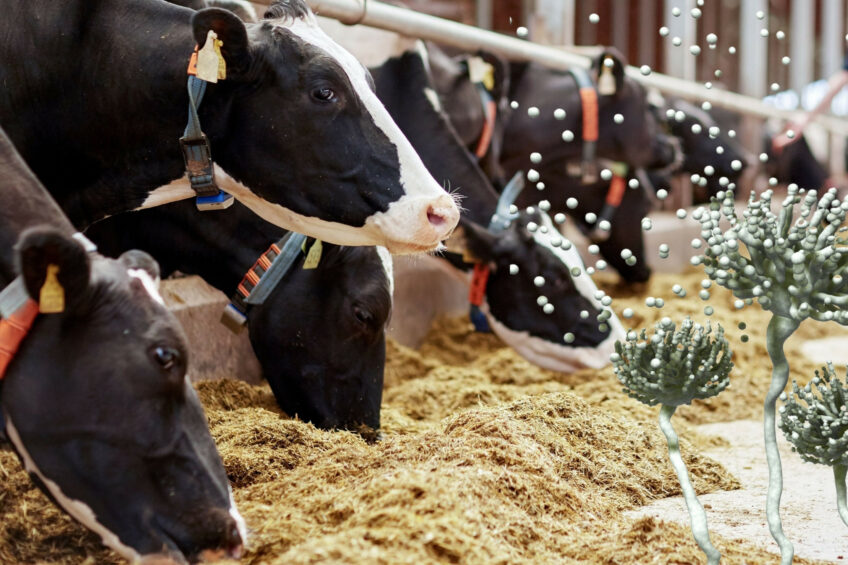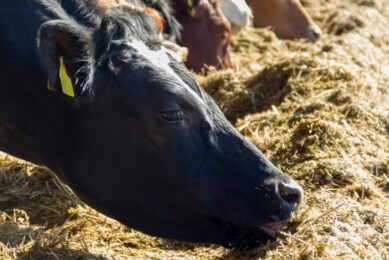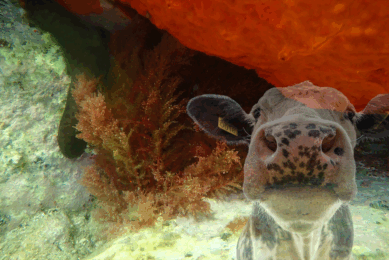Graphene oxide and its role in combating mycotoxins

Managing mycotoxins in agriculture is vital to safeguarding both animal and human health. Despite ongoing efforts, these toxins frequently contaminate food and feed, continuing to pose serious health threats. Could graphene oxide help?
Graphene oxide is seen as a promising tool for capturing and removing mycotoxins from contaminated food and feed, but choosing the right adsorbent is still a question for many breeders and an important criterion for feed manufacturers.
New adsorbents are still being sought, but graphene oxide is a promising material in the field of nanotechnology, which excels in its adsorbent properties without creating health risks of decreasing the quality of products.
The effects of graphene oxide on calf health
However, the increasing use of graphene oxide has meant that a thorough investigation into its potential toxic impacts on animal and human health, as well as the natural environment, is necessary.
So, scientists at Mendel University, Brno, Czechia, carried out a study to evaluate the effects of graphene oxide as a feed additive on calf health. In the study, 10 calves (100 ± 6 kg) participated in a 20-day experiment with 5 in the control group and 5 in the experimental group. The control group received feed without graphene oxide, while the experimental group was fed a diet containing 30 g of graphene oxide/kg/day.
Key parameters evaluated included growth performance, biochemical markers (ALT, AST, ALP), and mineral levels (Ca, P, Mg, K, Na, Cl, Fe, Cu, Zn).
Results
The average weight gain was 16.20 ± 0.32 kg in the control group and 15.40 ± 0.26 kg in the graphene oxide group, with no statistically significant difference (p > 0.05). Calves fed graphene oxide-enriched feed exhibited significant reductions in Fe (p = 0.041) and Zn (p = 0.0006) levels, while Mg increased significantly in the control group (p = 0.029).
Liver parameters in the experimental group showed significant increases in ALT (p = 0.022), AST (p = 0.027), and ALP (p = 0.015) after 20 days. Additionally, GPx activity was significantly decreased in the graphene oxide group (p = 0.011). These results suggest that graphene oxide at a dose of 30 g/kg/day in feed can negatively affect calf health.
Conclusions
According to a review of various papers, this study is the first to focus on the administration of graphene oxide in feed as an adsorbent of mycotoxins in calves and its effects on their general health. Feed and food contamination continues to be a worldwide problem, and feedstuffs create complex matrices that can complicate the adsorption of mycotoxins on graphene oxide. Both macro and micronutrients in the feed can bind to graphene oxide, potentially hindering mycotoxin adsorption.
In the study, researchers observed changes in the growth performance of calves exposed to graphene oxide, which may indicate a limitation of GIT nutrient access. However, within the biochemical parameters, the researchers did not observe any statistically significant effects of graphene oxide on the health status of the calves. Slight, non-significant upward trends in liver enzymes (ALP, ALT, AST) were noted in the experimental group, while the GPx value showed significant reduction.
The adsorption capacity of graphene oxide can be influenced by the presence of a biological matrix, from its mixing into the animal’s ration to its passage across the GIT in cattle. Furthermore, graphene oxide exhibits a non-specific effect on micronutrients, particularly Zn and Fe. A decrease in Zn and Fe concentrations was observed in the experimental group, which may indicate a potential effect of graphene oxide on micronutrient levels.
Considering the observed mild changes in liver enzymes and the absence of significant signs of toxicity at the overall health level, it can be assumed that a single exposure to graphene oxide at this dose does not cause major metabolic disruption.
However, since only one dose was tested, we acknowledge this as a limitation of the study. Additionally, the absence of a follow-up period after the withdrawal of graphene oxide from the feed represents another limitation, as it prevents the assessment of potential reversibility of observed effects.
The researchers recommend that future research include multiple dosage levels, ideally including lower doses, and consider incorporating a recovery phase to better determine the threshold of toxicity, dose-dependent effects of graphene oxide, and the possible reversibility of its impact.
Additionally, in vivo conditions, such as graphene oxide dose, exposure time, cell or animal type, and the technique used to assess cell viability, may influence the biocompatibility and toxicity of graphene oxide.
Graphene oxide has an excellent adsorption capacity, and by modifying or functionalising its groups, it could be a promising option for the adsorption of mycotoxins in an organism. When comparing with other in vivo results, mostly focused on rats or piglets, it is important to note that this research was focused on ruminants, which have a different digestion mechanism. Therefore, there is room for further research in this area, the researchers believe.











